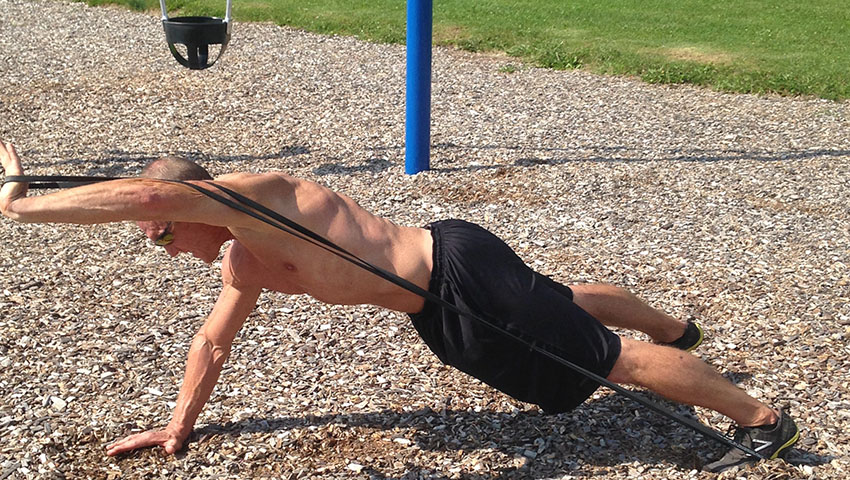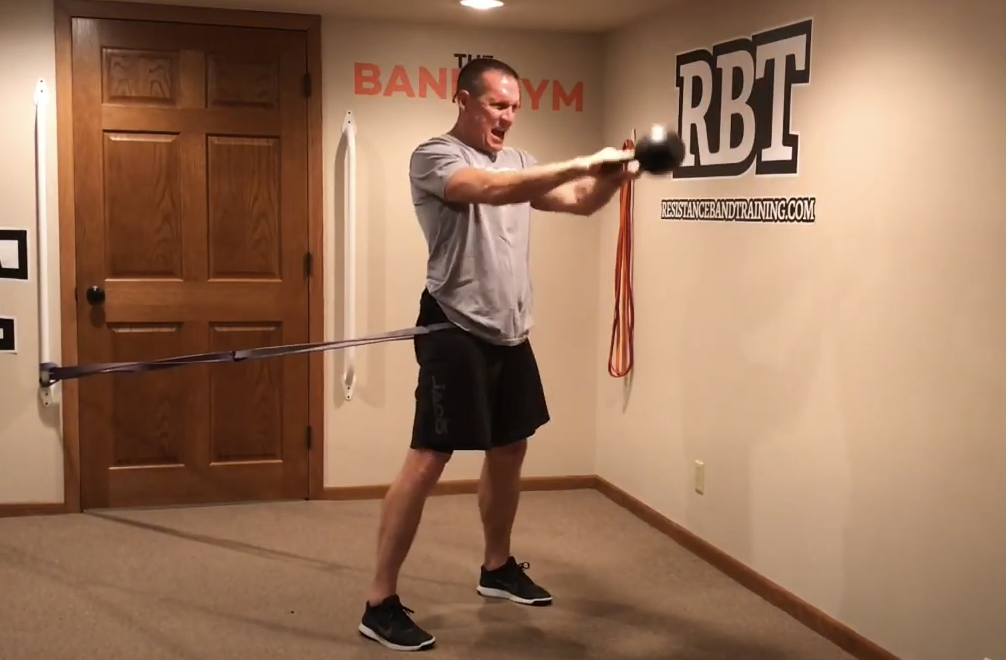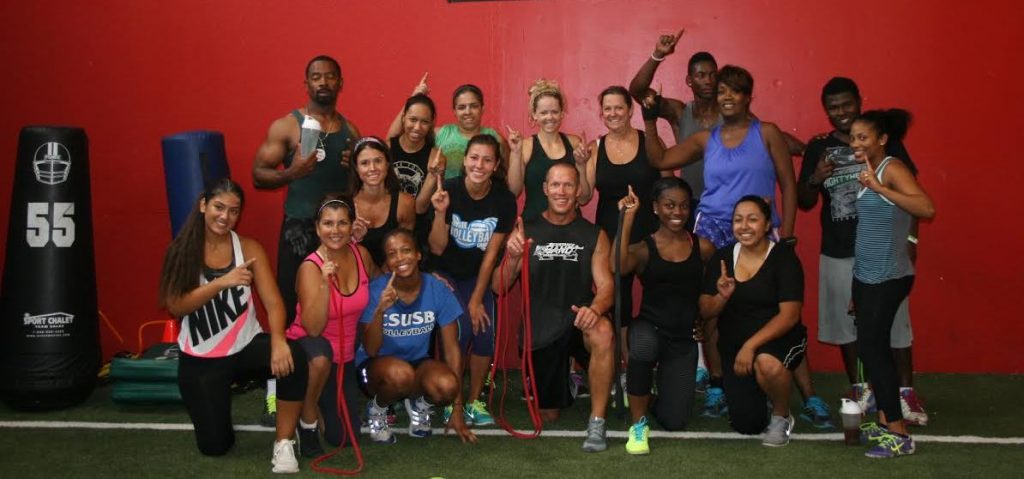Keeping the shoulder joint moving well and the rotator cuff a strong stabilizer are the keys to shoulder training success and longevity.
The shoulder joint, specifically the rotator cuff (RTC) tendons, is the second most frequently injured joint in the body (the low back is still #1). The biggest reason behind this lies in the fact that the shoulder is a joint designed for mobility with the muscles being the primary stabilizers of the joint. Interestingly enough, the rotator cuff muscle’s primary role is to keep the shoulder joint stable by keeping “the ball of the shoulder joint firmly in the shoulder socket while the arm is actively lifting, pushing, swinging, pulling, throwing or dragging”.
Here’s the problem …
The rotator cuff is a series of 4 small muscles with their tendon attachments located very close to the shoulder joint. Since they are small and have short lever arms, their ability to stabilize the shoulder by themselves is not possible. This is especially true when you consider the leverage and torque generated when we start lifting and throwing things with long extended lever arms.
Best Band Exercises for Absolute Shoulder Strength
The Band Overhead Push Press is going to allow you to develop absolute shoulder strength while also supporting your RTC to be a strong overhead stabilizer. Using a band to do overhead pressing will allow the use of an ascending resistance. This trains the RTC to stabilize the shoulder joint when the arms are completely extended overhead.
Also, a band’s pliability allows the arms to follow a more RTC-friendly scapular pattern of movement. This is compared to the straight overhead pattern followed when training with free weights like barbells or dumbbells.
5 Keys to Auxiliary Based Shoulder Training
As an active fitness enthusiast there are 5 things you should have built into your shoulder workout program on a weekly basis.
1. Foam Rolling is a Must
Stretching is important, but unless the facial lining of the muscles surrounding the shoulder joint are mobile, actual stretching of the shoulder is going to be less productive. Unfortunately, simple foam rolling is not good enough to release most facial issues of the shoulder.
The shoulder is a very contoured area with most of the muscles being small and overlapping. As a result, you will need to use something smaller to penetrate the myofascial structures of the shoulder muscles. The simplest device is a softball but there are several other types of small ball-shaped rollers on the market you can also use. Just make sure you hit the rotator cuff muscles and the anterior shoulder muscles, especially the pectoralis minor, regularly until there is no pain experienced.
Myofacial rolling should be done before any and all upper body strength training workouts as well as on non-strength training days if you find you have a lot of pain when you’re rolling out the shoulder muscles.
2. Band Distraction Stretching and Mobilization
Traditional shoulder stretching, where you move the arm on the body, is not a good idea if you want to keep the RTC healthy. These arm on body movement stretches require the stretching forces to go through the RTC tendons in order to get to the muscles in the back of the shoulder that need stretching.
Band distraction stretching, (demonstrated below) moves the body on a stationary arm. This approach allows you to drive the stretch forces from the pelvis into the back or front of the shoulder without having to first go through the RTC tendons. This band stretching technique also provides a simultaneous distraction of the shoulder ball and socket joint that opens up the space where the RTC tendons run. This distraction eliminates any potential pinching of the RTC tendons while stretching the actual muscles.
Shoulder distraction stretching should be done before any and all upper body strength training workouts. Here is an example of the shoulder distraction stretching I provide the members of The Band Gym.
Shoulder Distraction Stretching
3. Shoulder Stabilization Training
Most shoulder exercises like high pulls, front raises, side raises, reverse flies and shrugs are open chain movements. This means the arm is moving on a fixed body. All of these exercises require the RTC to be the primary stabilizer of the shoulder joint. As a result, these frequently performed traditional shoulder exercises lead to RTC overuse trauma and injury overtime.
A better way to work on shoulder strength and assist the RTC with stabilization, would be to put the hands onto a fixed surface like the floor and allow the body to move on stationary arms. The best example of a fixed surface exercise is a good old-fashion push up. There are 100’s of floor-based push-up or pressing variations. Unfortunately, many of them require having a high level of body weight strength to effectively perform.
Crawling is a simple way to implement this type of training and can easily be done by most people. Here are a few video examples of shoulder crawling stabilization exercises I provide members of The Band Gym to work on improving shoulder joint stabilization strength.
Shoulder Crawling for Shoulder Stability
RBT assisted push-up variations are also an effective way to enhance RTC stabilization strength. Below is how you can perform band-assisted push ups.
Assisted Pushing
4. Limit Your Open Chain Long Lever Training
As we age we need to become more selective of the shoulder exercises we do and how often we perform them. Open chain, long lever arm shoulder exercises like barbell high pulls and dumbbell front raises or side raises, place a huge amount of unnecessary stress on the RTC. These types of exercises — especially if you enjoy playing sports like tennis, softball, swimming, golf or racquetball — should be done on a very limited basis to avoid irritating the RTC tendons and potentially limiting your participation in those activities.
These exercises are very isolating exercises that create a minimal impact on how the shoulder looks and functions. Instead, consider doing more band-related pressing variations like the pillar presses demonstrated below. These will improve shoulder definition and stabilization strength without putting unnecessary pressure on the RTC.
Band Pillar Pressing Variations
5. Don’t Forget About Your Posture
Posture plays a huge role in keeping the shoulders healthy. Interestingly, the stronger and more well-developed the mid back and trunk muscles are, the more postural sound the body becomes.
Fortunately, when performing band shoulder pulling exercises that require a standing position, the working relationship (or integration) between the mid back and trunk stabilizing muscles leads to a more efficient postural alignment. It is very important from a posture stabilizing standpoint, that twice as much time is spent performing horizontal pulling exercises like rowing, face pulls and pull a parts versus vertical pulling exercises like front raises, side raises or high pulls.
Also, building greater trunk stabilization strength with exercises like planks, mountain climbers or side planks versus doing posture killing sit ups, crunches or leg raises, is a far better way to build dynamic postural strength and stabilization endurance.
Planks are a great way to get the abs and shoulder stabilizers working together
Summary
The key to keeping the shoulder looking, feeling and moving great is making sure we don’t place the RTC in compromised positions by incorporating open chain exercises that place isolated shoulder stabilization demands directly on the RTC. Instead, a more effective training solution that will be far more RTC-friendly and apply more natural movement patterns of shoulder movement is resistance band training. Plus, unlike its free weight counter part, resistance band training can also provide the stretching and mobilization needed to help maintain fluid mobility through the shoulder joint complex.
Related Videos and Articles
5 Exercise Swaps for Healthy Shoulders
Secret to Training Active Aging Shoulders
Shoulder Strength Training with Mobility
Want Help With Your Shoulder Training??
Consider letting Dave coach you in The Band Gym!!
Take A Tour of The Band Gym




